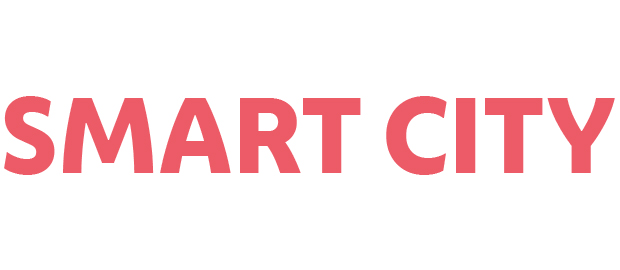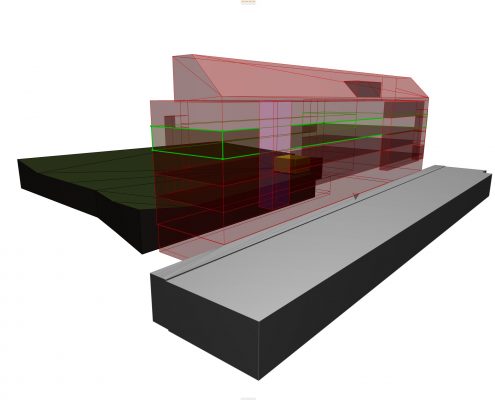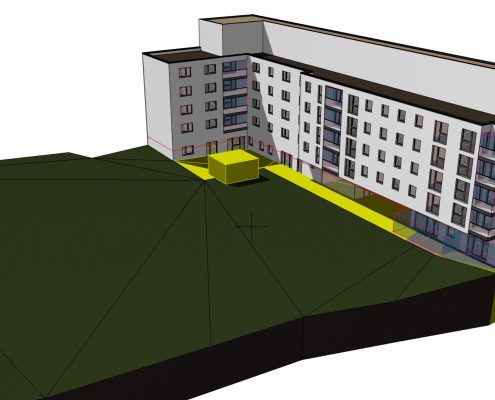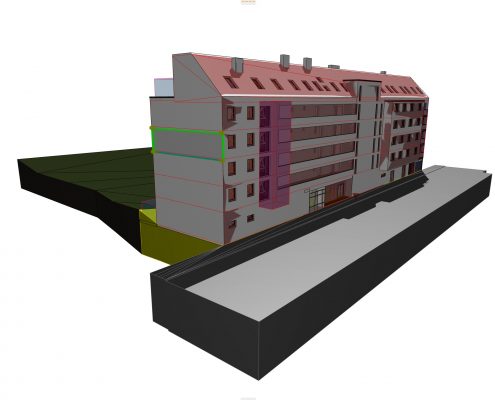
The City of Vienna and a number of partners – TU Vienna, SMEs tbw-ode and WH Media and the Chamber of Architects & Civil Engineers for the provinces of Vienna, Lower Austria and Burgenland – are working together on the BRISE project (Building Regulations Information for Submission Envolvement). The aim of the project is to fully digitalise the building permit process from application through to approval, primarily with a view to reducing the time required to issue a permit. Thanks to BRISE, the building permit process could be up to 50% faster in future. Applicants will not only benefit from a faster, simpler approval process; immediate feedback from a preliminary assessment will also provide them with a sounder basis for planning and allow any corrections or adjustments to be made in good time. In addition, virtual 3D models of proposed developments will give members of the public a clear view of the impact of a project before construction work even commences.
BIM software facilitates planning and construction of buildings
Building Information Modelling (BIM) is a web-based planning method that allows the stakeholders to coordinate their input and create digital models containing all the key data about the building in terms of e.g. architecture, structural engineering, technical installations, etc. BIM allows the process stakeholders to work with a 3D building model instead of 2D paper plans. BIM allows applicants to submit a 3D model of their building, which the building authority can check against virtual reference models for compliance with the technical and legal requirements. This digital process is based on algorithms, using machine learning and artificial intelligence (AI) to help identify the exact rules and regulations that apply to the specific site in question.
A 3D model visualises the planned buildings
Augmented reality visualises the future building to all involved stakeholders in a clear, easily understood way. It positions the virtual building in its surrounding environment and visualises shading, distances, heights and other effects of the buildings in a realistic fashion, so everyone involved has a clear view of the development in situ before construction work even commences.
BRISE utilises state-of-the-art technologies and builds on the individual users’ perspectives, thus ensuring that the system will be useful and of real value – not only to families waiting for their new homes and those who are delivering those homes, but also to scientists and researchers, who will gain valuable experience and a living lab for the further development of digital administrative processes.
International applicability
In the medium term, the fully digital building permit system will also contribute to the development of greener, more resource-efficient building methods, because it integrates all of the necessary assessment mechanisms, quality criteria and standards and in some cases automatically ensures compliance. It is thus fully aligned with the goals of the Smart City Wien Framework Strategy. BRISE also increases productivity of the involved stakeholders in terms of costs, timely delivery and quality.
Scheduled for completion in August 2022, the BRISE R&D project will allow cities across Europe to learn from the experience gathered in Vienna, serving as a blueprint for replication and transfer to other scenarios and dimensions. The EU is therefore funding the project to the tune of 4.8 million euro via its Urban Innovative Actions (UIA) initiative.
Contact
This post is also available in: German






